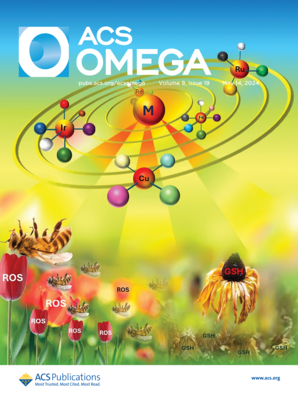具有四元立体中心的羟基羧酸对映体分离中溶剂诱导的手性转换
IF 4.3
3区 化学
Q2 CHEMISTRY, MULTIDISCIPLINARY
引用次数: 0
摘要
用(1R,2S)-2-氨基-1,2-二苯乙醇形成非对映体盐,对三种具有季立体中心的异构羟基羧酸进行了对映体分离。外消旋酸1在β-位置有一个季性手性中心,其分离效率接近理想。在难溶性盐中加入的酸2和酸3的立体化学根据再结晶溶剂的不同而发生逆转,并且两种对映体都是可接近的。从难溶非对映异构体盐的晶体结构出发,讨论了这种手性转换的机理;盐与醇分子的溶剂化改变了氢键网络及其稳定性。本文章由计算机程序翻译,如有差异,请以英文原文为准。
Solvent-Induced Chirality Switching in the Enantioseparation of Hydroxycarboxylic Acids with a Quaternary Stereogenic Center
The enantiomer separation of three isomeric hydroxycarboxylic acids with a quaternary stereogenic center via diastereomeric salt formation with (1R,2S)-2-amino-1,2-diphenylethanol was demonstrated. Racemic acid 1, with a quaternary chiral center at the β-position, was separated with nearly ideal efficiency. The stereochemistry of acids 2 and 3 incorporated in the less-soluble salts was reversed depending on the recrystallization solvents, and both enantiomers were accessible. The mechanism of this chirality switching was discussed based on the crystal structures of the less-soluble diastereomeric salts; the solvation of the salt with an alcohol molecule changed the hydrogen-bonding network and its stability.
求助全文
通过发布文献求助,成功后即可免费获取论文全文。
去求助
来源期刊

ACS Omega
Chemical Engineering-General Chemical Engineering
CiteScore
6.60
自引率
4.90%
发文量
3945
审稿时长
2.4 months
期刊介绍:
ACS Omega is an open-access global publication for scientific articles that describe new findings in chemistry and interfacing areas of science, without any perceived evaluation of immediate impact.
 求助内容:
求助内容: 应助结果提醒方式:
应助结果提醒方式:


